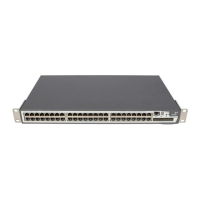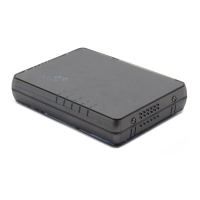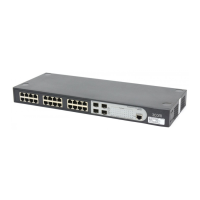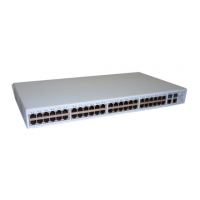26 CHAPTER 2: INSTALLING THE SWITCH
Table 6 below, outlines the behavior of the Switch when changes occur to
the power system, such as removing the AC mains cable when the RPS is
attached. The responses to the different power inputs are controlled by
the Switch’s internal power supply and not by the RPS.
Table 6 Switch Power Inputs
3Com’s RPS solution uses 48V DC power distribution. The RPS system
provides bulk 48V DC power that is separately distributed to a number of
network switches.
Each RPS consists of a shelf which can house from one to six rectifiers, a
Distribution Module and a Management Module.
The RPS generates 48V DC power using power supply units (or rectifiers).
The outputs of the rectifier(s) are connected together so that the total
48V power available can be increased by adding additional rectifiers. For
example, three 1500W rectifiers can provide up to 4500W. Hot removal
or insertion of a rectifier will not affect the 48V DC output voltage.
Table 7 shows an example of the total power available from a number of
1500W rectifiers.
A minimum of two rectifiers are required for each shelf to provide N+1
rectifier redundancy.
Power Input before
User Intervention
Power Input after
User Intervention
Correct Response
AC mains and RPS RPS only The unit remains powered by the RPS.
AC mains and RPS AC mains only The unit is powered by the AC mains.
RPS only AC mains and RPS The unit remains powered by the RPS.
AC mains AC mains and RPS The unit is powered by the RPS.
DUA1715-0AAA02.book Page 26 Wednesday, March 23, 2005 11:17 AM

